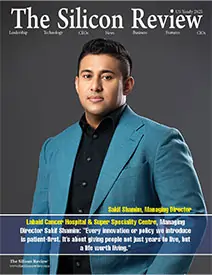>>
Technology>>
Cyber security>>
Beyond the Checklist: How Alaa...Beyond the Checklist: How Alaa Abdulridha’s Red Teaming Philosophy Is Reshaping Enterprise Security
The Silicon Review
14 October, 2021
- Sarah Brown
Traditional penetration tests often follow rigid checklists that spot outdated packages, open ports, or misconfigurations; yet, they usually miss deeper architectural flaws that attackers exploit. This gap is where Alaa Abdulridha has built his reputation.
As both a senior software engineer and red team specialist, he identifies logic flaws and design-level vulnerabilities that routine tests overlook. His approach has redefined security reviews across large-scale enterprises, proving that real protection comes from expertise and curiosity, not just compliance.
Who Is Alaa Abdulridha?
Alaa Abdulridha is a rare hybrid in the world of cybersecurity, equally adept at building and breaking. As a senior software engineer at SerpApi and a former security engineer at GPSLVN in Iraq, Alaa held critical roles on both sides of the security equation, building scalable systems and securing high-risk infrastructure used by government agencies and embassies.
But Alaa’s influence doesn’t stop at defensive architecture. As an independent security researcher, he has uncovered critical vulnerabilities in systems operated by Facebook, Twitter, and the U.S. Department of Defense, earning him over $55,000 in bug bounty rewards and placements in multiple public Halls of Fame.
What sets Alaa apart isn’t just his technical range; it’s his ability to operationalize it. He doesn’t simply exploit weaknesses; he redesigns systems to be stronger, safer, and brighter than before. In a landscape where security is too often siloed or reactive, Alaa bridges the gap between engineering with an attacker’s mindset and defending with a developer’s precision.
Five Questions With a Builder Who Thinks Like a Breaker
Alaa doesn’t fit the usual mold. He’s part engineer, part attacker, someone who builds secure systems by knowing exactly how they break.
How do you approach red teaming differently from standard penetration tests?
“Most pen tests catch surface issues, missing headers, outdated packages, and open ports. I go deeper by asking, ‘Where would I hide if I were the attacker?’ It’s not about scanning; it’s about mindset. I embed early in the development cycle to test the architecture itself, not just surface symptoms. That’s how you catch issues that tools and checklists miss.
How do you balance being both a developer and a security researcher?
“I’ve built APIs and large-scale systems in five languages, so I know how developers think. When I find a bug, I can recommend a fix immediately. That builds trust and shortens the remediation cycle.”
Why do you believe security should empower innovation rather than block it?
“Too often, security is seen as the team that says ‘no.’ I see it as the enabler. When security is integrated into the build process, not as an afterthought, teams release faster with greater confidence. Strong security should accelerate delivery, not slow it.”
What advice would you give young researchers entering the bug bounty space?
“Don’t chase tools, chase understanding. My discoveries at Facebook came from following logic, not using advanced scanners. Be curious, stay ethical, and always share knowledge. Books like The Web Application Hacker’s Handbook shaped my technical depth, while Thinking, Fast and Slow improved how I analyze problems.”
Case in Point: Strengthening Automotive Cybersecurity
![]()
When Alaa led security efforts at GPSLVN, a company serving government agencies and embassies in Iraq, his role went far beyond finding flaws; it was about trust at the highest level. He was responsible for securing systems where both physical safety and sensitive data were on the line.
That trust wasn’t built on surface scans or checklists. It stemmed from in-depth architectural reviews that analyzed how APIs communicated, identified failure points in complex flows, and pressure-tested systems under real-world edge cases. Alaa didn’t just assess features; he interrogated how systems behaved under stress.
His work safeguarded millions of users and prevented vulnerabilities from becoming incidents. In an industry where both lives and sensitive data are at stake, cosmetic security isn’t enough. Depth isn’t optional. It’s the difference between resilience and risk.
What to Do Next
Alaa Abdulridha continues to redefine how enterprises approach security, treating it as a design discipline rather than a compliance checkbox. His work with global tech platforms like Facebook, Twitter, and the U.S. Department of Defense shows that true resilience comes from embedding security early and approaching systems with both engineering depth and an attacker’s mindset.
Looking ahead, Alaa’s vision is to advance innovation in the automotive and technology sectors by publishing research, mentoring emerging talent, and leading initiatives that make security an enabler of progress. For him, lasting impact means leaving every system safer than he found it.
_2025-11-17_06-38-14.webp)


 (1)_2025-10-21_13-35-14.webp)

_2025-10-02_10-21-48.webp)
